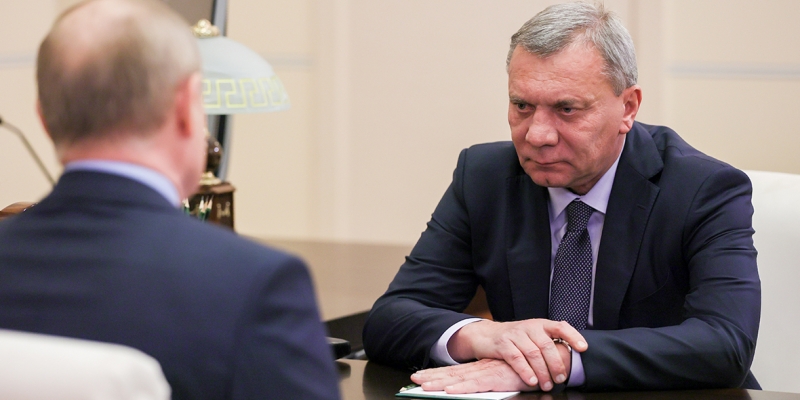Among the new types that are proposed to be included in the state armament program, Deputy Prime Minister Yuri Borisov named kinetic weapons and robotic complexes

Vladimir Putin and Yuri Borisov
A new Russian state armament program will be formed by mid-2023.Within this framework, non-traditional types of weapons will be created. This was stated by Deputy Prime Minister Yuri Borisov at a meeting with President Vladimir Putin, according to a statement on the Kremlin’s website.
“The new weapons program will be aimed at creating qualitatively new, including non-traditional, types of weapons, including directed energy weapons, kinetic weapons, as well as control systems using artificial intelligence and robotic complexes,” Borisov said.
According to the Deputy Prime Minister, the work on the preparation of the initial data of the program has been completed, it will be finalized and submitted to the head of state for approval in mid-2023.
In addition, Borisov noted, the industry is currently “accelerating the pace and volume of import substitution”. According to him, in order to ensure the stability of the defense industry, the government has increased advance payments for the procurement of electronic components up to 100%. “It has also been granted the right to conclude contracts under the state defense order (GOZ) with a single supplier at approximate prices not exceeding the GOZ indicators, without registration with the FAS,” the message says.
Kinetic weapons use kinetic energy of striking elements, the speed of movement of which is significantly higher than conventional weapons. The target, when hit, is destroyed mechanically by such striking elements due to their high speed. Rocket fuel and electromagnetic accelerating systems can be used in kinetic weapon systems, and both controlled and unguided small and light objects can be used as striking elements. The most promising field of application of kinetic weapons is air defense and missile defense.
Kinetic weapons are being developed in several countries, including the United States and Russia. In November, the United States launched a probe into space to protect the planet from asteroids as the first demonstration of the kinetic impact mechanism technique. The project was named DART, its goal was announced to test technologies to prevent a dangerous asteroid from colliding with the Earth. It is planned that by autumn the probe will reach the double 160-meter asteroid Didymos Dimorphos, which orbits the Sun together with the Earth, and, colliding with it at a speed of about 24 thousand km/h, will change the trajectory of its flight.
In December 2020, the United States announced the ongoing development of space and laser weapons in Russia. Then the space command of the US Department of Defense reported that Russia had tested an anti-satellite direct interception missile. The statement also indicated that the country had demonstrated two completely different types of space weapons. The first is the DA-ASAT system, capable of destroying satellites in low Earth orbit, which has been repeatedly tested in Russia, the US Space Forces Command noted.
The second type is the orbital anti-satellite system of space weapons, which demonstrated kinetic weapons in orbit in 2017 and 2020. The US military recalled that in March 2018, Russian President Vladimir Putin announced the development of a ground-based laser system for use by space forces, which the Russian military recognized as a combat laser system.
New developments in the field of armaments were also announced in Russia itself. At the end of 2018, the holding “Roselectronics” (part of the corporation “Rostec”) He announced the successful completion of the tests of the 1B75 sound-thermal artillery reconnaissance complex “Penicillin”. The system tracks noise and kinetic energy usingfour sound-thermal locators, a large stabilization platform and an optoelectronic module. In addition to the functions of artillery reconnaissance, Penicillin provides radio communication of automated control systems with external subscribers at a distance of up to 40 km.
Subscribe to RuTube RBC Live broadcasts, videos and recordings of broadcasts on our RuTube channel

